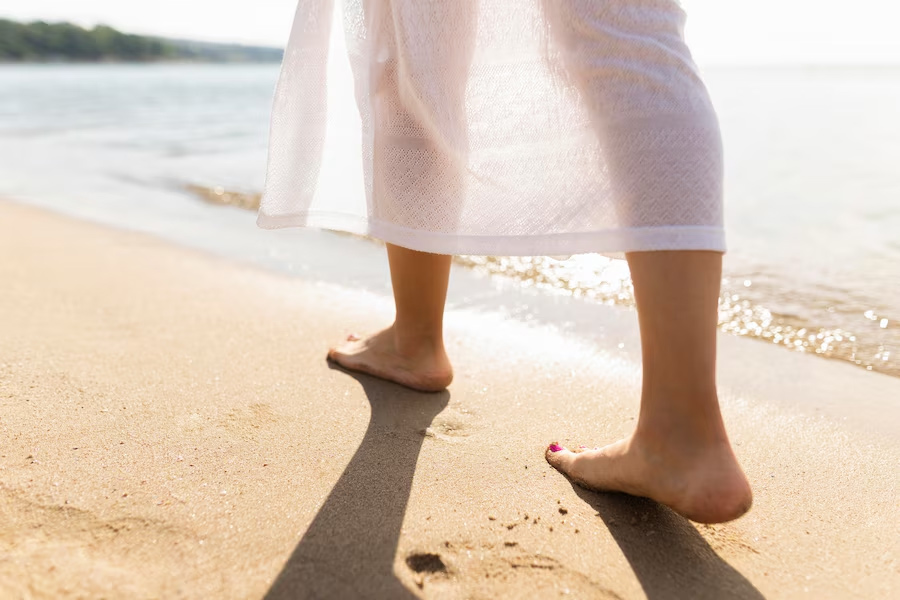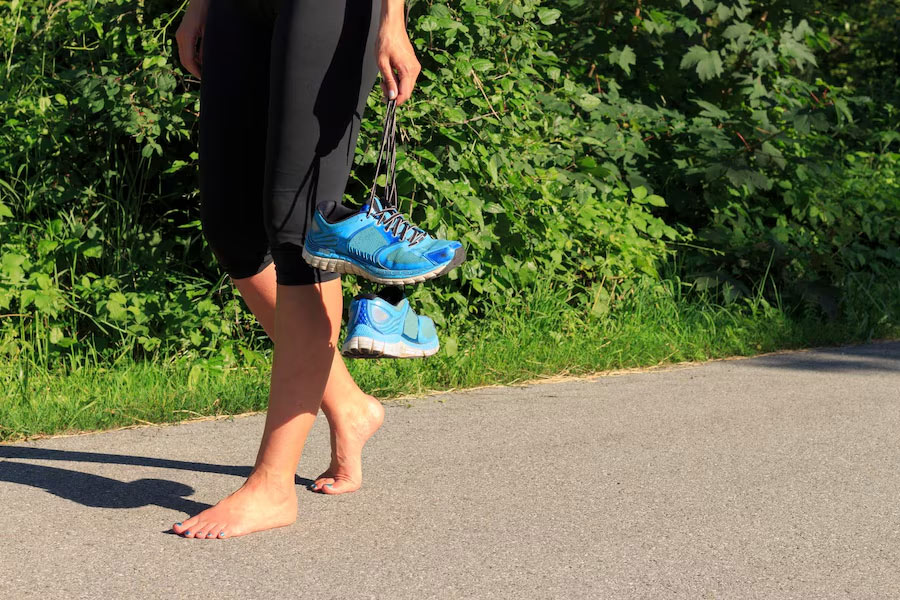
Walking barefoot indoors might feel calming and comforting, but it isn’t always beneficial for your feet. While many believe going barefoot strengthens muscles and improves balance, experts suggest it can worsen certain foot conditions and lead to avoidable pain and discomfort. For individuals with specific medical concerns, wearing supportive footwear is often a better option to protect their feet and maintain overall foot health.
Table of Content:-
To better understand the same, we at OnlyMyHealth connected with Dr. Prateek Kumar Gupta, Vice-Chairperson, Orthopaedics, Sir Ganga RAm Hospital, New Delhi. Our expert shared a list of conditions that put people at a risk if they walk barefoot.
RELATED: Power Of Foot Reflexology: 8 Key Pressure Points For Enhanced Wellness
Plantar Fasciitis![dangers-of-walking-barefoot]()
One of the most common issues aggravated by barefoot walking is plantar fasciitis. This condition occurs when the tissue connecting the heel to the ball of the foot becomes inflamed or damaged. Dr Gupta explains, “The most common problem is called diabetic foot or plantar fasciitis wherein walking barefoot increases the pain in the ankles. Using soft padding or supportive footwear can ease the discomfort significantly.”
According to the American Academy of Orthopaedic Surgeons (AAOS), plantar fasciitis can arise due to increased physical activity or unknown reasons. However, avoiding barefoot walking and wearing well-cushioned shoes is a key preventive measure.
Tendonitis
Another condition exacerbated by barefoot walking is tendonitis. Tendons connect muscles to bones and play a crucial role in movement. Inflammation of these tendons due to lack of support can lead to persistent pain. Similarly, walking barefoot can worsen conditions like Morton’s neuroma, which causes numbness or pain in the ball of the foot or toes.
Dr. Gupta also highlights issues related to foot deformities. He notes, “If the toes are bent, the pressure in the point of contact with the ground increases and the pain increases.”
Flat Feet
People with flat feet, a condition where the arches of the feet are underdeveloped or collapsed, often struggle with barefoot walking. Flat feet lack the natural arch support that cushions impact. Walking barefoot overworks the muscles and tendons, causing aches and making individuals prone to other foot issues. Supportive footwear with arch support is essential for those with flat feet to prevent overexertion and related complications.
Sesamoid Injuries
Walking barefoot can also aggravate sesamoid injuries. The sesamoid bones, located in the ball of the foot, support the larger bones during movement. Without adequate cushioning, barefoot walking puts extra strain on these small bones, leading to inflammation or injury. Dr Gupta notes this as another factor
Furthermore, barefoot walking may increase the risk of small, unnoticed injuries, such as cuts or bruises, which can worsen for individuals with conditions like diabetes. People with diabetic foot should be particularly cautious, as they may experience reduced sensation and a slower healing process, increasing the likelihood of infections and complications.
Choosing The Right Footwear

Experts recommend wearing soft, comfortable shoes with proper cushioning and arch support to reduce the risk of foot pain and injuries. Shoes with a wide toe box can also provide relief for conditions like Morton’s neuroma by reducing pressure on the toes. Silicone padding and orthopaedic insoles are helpful for additional comfort and protection.
It is advised against walking barefoot indoors for those prone to foot conditions, suggesting that supportive footwear can help mitigate stress on the feet. For active individuals or athletes, replacing narrow or unsupportive shoes with well-designed trainers can also prevent foot strain and injuries.
Why Barefoot Walking Isn’t Always Harmful
While barefoot walking has its downsides for certain individuals, it can still offer benefits for others. For people without pre-existing foot conditions, walking barefoot can strengthen foot muscles, improve posture, and enhance proprioception (awareness of body position). However, moderation is key, and understanding your foot health is essential before deciding to go barefoot regularly.
RELATED: The Role Of Footwear In Knee Health: How To Choose The Right Shoes For Support
When Should You Seek Help?
Persistent foot pain, swelling, or discomfort should not be ignored. Consulting an orthopaedic specialist or podiatrist can help identify underlying issues and recommend appropriate footwear or treatments. Early intervention prevents long-term complications and ensures optimal foot health.
Walking barefoot may seem harmless, but for many, it can contribute to significant discomfort and worsening foot conditions. Whether you’re managing plantar fasciitis, flat feet, or other foot issues, investing in the right footwear is a simple yet effective way to protect your feet and maintain their health.
Also watch this video
How we keep this article up to date:
We work with experts and keep a close eye on the latest in health and wellness. Whenever there is a new research or helpful information, we update our articles with accurate and useful advice.
Current Version
